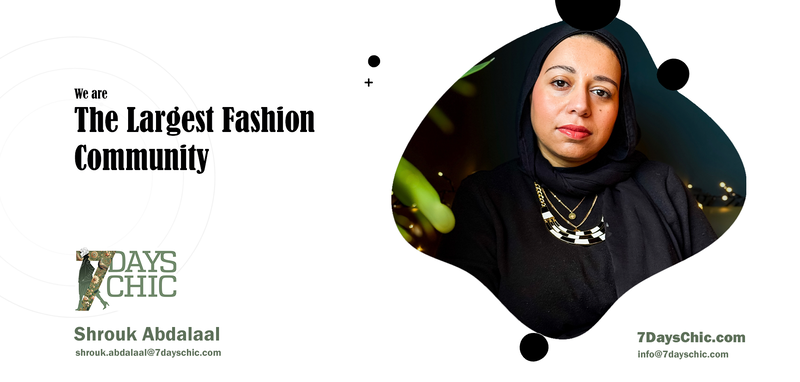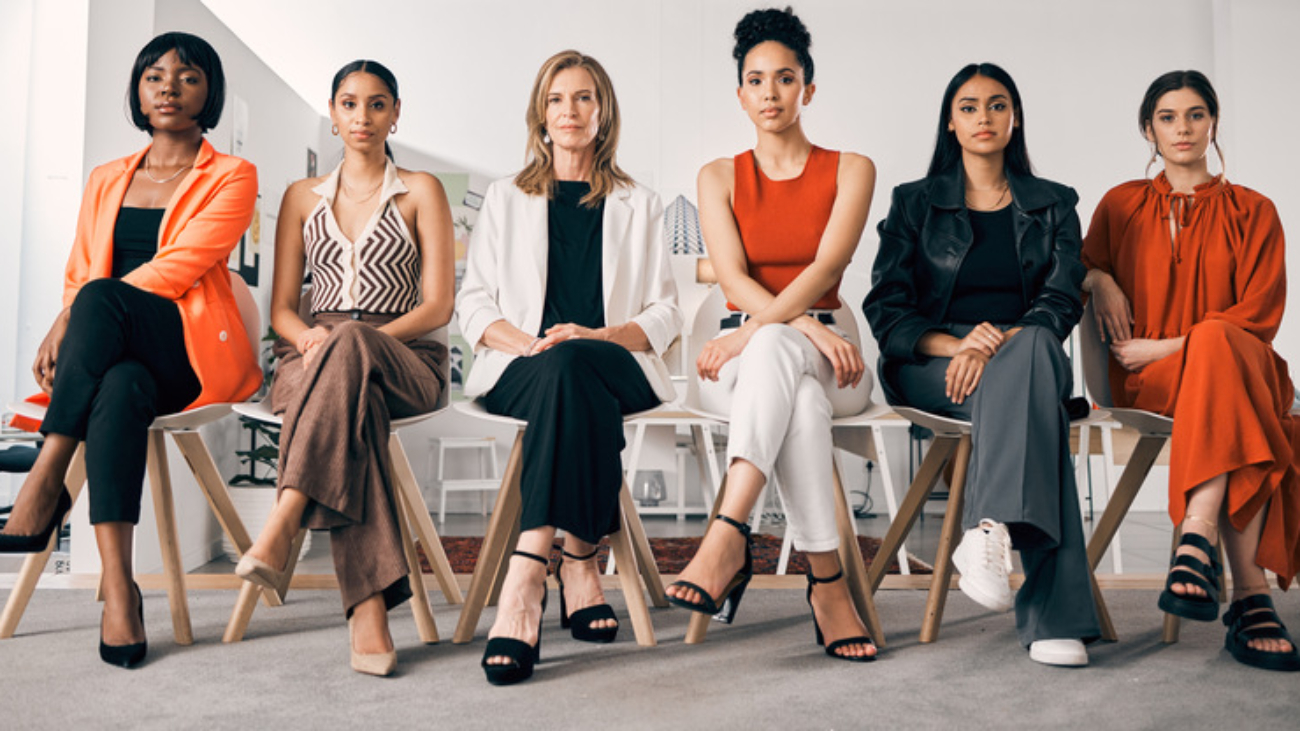1. Introduction
Why Fashion Designers Matter
Fashion designers play an important role in shaping culture, trends, and social values, acting as creative visionaries who influence how people express themselves and interact with the world. Here’s why they matter:
1. Cultural Reflection and Creation
Fashion designers are storytellers who represent the cultural. They draw from history, art, and global traditions to create designs that attract the contemporary audiences.
Designers translate societal movements, politics, and values into wearable art. For example:
- During the feminist movements of the 1960s, Mary Quant popularized the mini skirt, symbolizing female empowerment and rebellion.
During times of uncertainty, such as pandemics or economic downturns, fashion often prioritizes practicality, exemplified by the rise of athleisure. In contrast, periods of growth and optimism usher in bold and extravagant designs that celebrate creativity and confidence.
Fashion designers do more than mirror culture—they actively shape it, often acting as catalysts for social transformation. Through their work, they introduce ideas that redefine everyday style, challenge conventions, and inspire change.
As both products of their culture and agents of innovation, designers draw from societal movements to create designs that capture the spirit of the present while shaping the future. By embracing diversity, challenging norms, and advancing sustainability, designers play a pivotal role in cultural evolution, leaving a lasting impact on how we perceive ourselves and the world around us.
2. Trendsetters and Innovators
Designers set the tone for upcoming trends, often pushing boundaries by experimenting with materials and techniques. Their creations influence not only high-class couture but also mass-market fashion, shaping how millions of people dress.
Designers often create bold, conceptual looks on the runway that eventually influence mainstream fashion. For example:
- Balenciaga’s oversized silhouettes, introduced by Demna Gvasalia, have filtered into everyday streetwear.
They also establish seasonal themes that influence global fashion. For example:
- Prada’s bold prints and retro revival sparked the recent wave of 2000 fashion.
At the core of fashion design is innovation. Designers constantly push the limits of creativity, technology, and materials to redefine the industry.
They reinvent traditional silhouettes, challenging norms of proportion and fit. For example:
- Alexander McQueen’s avant-garde creations, like the “bumster” pants, reshaped how we view the human form.
We found designers experiment with fabrics and techniques, creating textiles that are both functional and sustainable. For example:
- Stella McCartney’s use of Mylo (mushroom leather) and Gabriela Hearst’s biodegradable fabrics have redefined eco-friendly luxury.
Fashion designers are at the forefront of both style evolution and industry transformation. As trendsetters, they influence the way we dress and express ourselves. As innovators, they explore uncharted territories of creativity, sustainability, and technology, ensuring that fashion continues to inspire and adapt to the changing world.
3. Shapers of Social Values
Fashion is often used as a platform for activism. designers address issues such as body positivity and racial equality through their work, challenging social norms and sparking important conversations by campaigns for inclusive sizing or collections featuring diverse models help redefine beauty standards.
Also, designers influence values such as sustainability and ethical consumption. For example, the rise of eco-conscious fashion, reflects a growing social commitment to the environment.
Representation is becoming a cornerstone of modern fashion, as designers amplify marginalized voices and break barriers within the industry For example:
- Prabal Gurung incorporates his Nepalese heritage into his designs, advocating for immigrant and cultural representation.
- Kerby Jean-Raymond of Pyer Moss tells the stories of Black culture and history through his collections, bringing social justice to the runway.
- Simone Rocha and brands such as The Row have included older models in campaigns and on runways, challenging the youth-centric norms of the fashion industry.
They also reshaping values around consumption, advocating for more sustainable and ethical practices. For example:
- Stella McCartney has been a pioneer in cruelty-free fashion, proving that luxury can be ethical and eco-friendly.
- Designers like Gabriela Hearst merge sustainability with high fashion, creating luxurious, timeless pieces that encourage a shift away from fast fashion.
Fashion designers are agents of cultural and social transformation, using their platforms to challenge conventions, advocate for inclusivity, and inspire progress. By reflecting society’s ideals and aspirations, while also pushing boundaries, they influence not only how we dress but also how we think, connect, and engage with the world around us.
The Influence of 21st-Century Fashion Designers
The 21st century has seen a profound transformation in fashion, driven by the rise of global connectivity, technological advancements, and evolving social values. 21st-century fashion designers have redefined the industry by challenging conventions, embracing diversity, and leveraging digital platforms to reach global audiences. These designers are not just creators but cultural influencers, using their platforms to address pressing issues like sustainability, inclusivity, and social justice. Their impact is far-reaching, reshaping fashion from the runway to the street. Here’s how they have shaped modern fashion in this era:
1. Globalization and Cultural Fusion
Designers now draw from a global tapestry of cultures and creating designs that show multiculturalism. modern fashion designers operate in a globalized environment, transcending geographic limitations. The internet and digital platforms have enabled them to showcase collections to international audiences instantaneously, reaching consumers worldwide.For example:
- Designers like Demna Gvasalia and Virgil Abloh have harnessed the power of social media to share their vision globally. They utilize platforms like Instagram, TikTok, and Snapchat to create content that resonates with young, global audiences, making fashion more accessible and relevant in diverse cultural contexts.
2. Technology and Digital Transformation
Traditional runway shows have transformed into live-streamed events and digital presentations, eliminating geographical barriers and making fashion more accessible. This shift allows designers to reach global audiences in real time, democratizing an industry once defined by exclusivity.
The integration of AI and data analytics is reshaping fashion design. Designers leverage AI to predict trends, optimize production processes, and create personalized experiences for consumers.
For example:
- Alexander Wang and Telfar Clemens have embraced AI in their creative processes, using it to analyze consumer data and tailor their collections to meet market demand.
The use of 3D printing technology is also revolutionizing fashion, like Zaha Hadid are experimenting with 3D-printed textiles and accessories that push the boundaries of what is physically possible in fashion.
These advancements highlight how technology is reshaping fashion, enabling designers to innovate, engage broader audiences, and redefine the creative possibilities of the industry.
3. Inclusivity and Representation
Expanded Body Positivity as we found designers like Christian Siriano and Rihanna’s Savage X Fenty have shattered traditional beauty standards by showcasing diverse body types on runways and in campaigns.
Cultural and Gender Inclusivity by unisex and gender-fluid collections are redefining traditional fashion norms, with brands like Telfar and Thom Browne leading the charge. These collections challenge binary gender conventions, offering designs that cater to all identities. Additionally, designers are increasingly prioritizing diverse casting, ensuring that runways and campaigns reflect a wide spectrum of race, ethnicity, and age. This commitment to inclusivity fosters representation, making the fashion industry more reflective of the world it serves
4. Political and Social Commentary
Designers are using fashion as a platform to address pressing issues. Maria Grazia Chiuri at Dior incorporated feminist slogans into collections, while Balenciaga has highlighted topics like climate change and refugee crises through runway presentations.
Protest fashion, such as the resurgence of slogan tees, continues to be a powerful medium for advocacy.
Fashion designers of the 21st century are more than creators of clothing, they are innovators, advocates, and cultural commentators. Harnessing the power of globalization, technology, and shifting social values, they continually redefine the role of fashion in a hyper-connected and ever-changing world. Their impact goes beyond mere aesthetics, influencing societal attitudes, driving consumer behavior, and shaping the future trajectory of the industry. By merging creativity with purpose, these designers have transformed fashion into a platform for expression, activism, and innovation.

2. Defining Influence in Fashion
Fashion designers have the power to shape how people perceive and engage with their surroundings through clothing. Their influence comes from their ability to navigate and address cultural, commercial, and environmental demands, leaving an indelible mark on society. Below are the key dimensions of their influence:
Cultural Impact
Designers both reflect and shape societal changes, using fashion as a medium to represent contemporary values and drive cultural transformation by:
- Reflecting Diversity and Inclusivity: Fashion has become a powerful tool for celebrating diversity. Designers have redefined the industry’s role in amplifying marginalized voices, ensuring that collections and campaigns showcase models of various sizes, ethnicities, genders, and abilities. This inclusivity not only broadens representation but also makes fashion more relatable and empowering for a global audience.
- Catalyzing Change: Fashion often acts as a catalyst for social progress. for instance, The rise of gender-neutral designs, challenges traditional gender norms and aligns with evolving discussions around identity and expression. By breaking these conventions, designers foster a more inclusive understanding of style and self-representation.
- Cultural Commentary: Designers frequently use their platforms to engage with political and social issues. Whether addressing feminism, climate change, or human rights, fashion becomes a vehicle for raising awareness and sparking dialogue. Through their work, designers comment on the world around them, influencing public opinion and inspiring action.
Commercial Success
Balancing artistic creativity with market appeal is essential for maintaining long-term influence in the fashion industry. Designers must navigate the intersection of innovation and practicality to resonate with diverse audiences by:
- Mass Appeal Meets Innovation: Successful designers find the sweet spot between avant-garde creativity and everyday functionality. By creating edgy, trend-forward designs with practical appeal, they achieve both cultural relevance and commercial viability, ensuring their work appeals to a wide range of consumers.
- Luxury Meets Accessibility: Collaborations between luxury brands and high-street retailers have democratized high fashion, making it accessible to broader audiences. These partnerships, such as H&M’s collaborations with high-end designers, expand a designer’s cultural reach and reinforce their influence on global fashion
- Building Iconic Brands: A designer’s legacy often hinges on creating iconic products that become cultural symbols. Items like the Hermès Birkin bag or Nike’s Air Jordans exemplify this phenomenon, showcasing how signature designs can leave an indelible mark on both fashion and society.
By balancing creativity with accessibility and cultural relevance, designers not only respond to societal changes but also shape broader cultural narratives. This dynamic interplay ensures that fashion remains a powerful and evolving force in the world.
Innovative Designs
Transformative contributions to silhouettes, materials, and aesthetics shape how people perceive and engage with fashion by:
- Pioneering Silhouettes and Techniques: Designers have redefined traditional silhouettes by breaking conventional norms and prioritizing structural innovation. From exaggerated forms to deconstructed tailoring, these bold approaches push the boundaries of what fashion can be, offering fresh perspectives on proportion and fit
- Material Experimentation: The exploration of unconventional materials has revolutionized the possibilities in fashion design. Innovations such as 3D-printed fabrics and bioengineered textiles showcase how designers are embracing technology and science to create garments that are not only visually striking but also sustainable and functional
- Aesthetic Evolution: Fashion’s aesthetics continue to evolve under the influence of visionary designers. The integration of streetwear elements into luxury fashion by trailblazers like Virgil Abloh and Demna Gvasalia has redefined the meaning of luxury, blending casual wear with high-end sophistication and permanently altering the fashion landscape.
These transformative contributions highlight the role of designers as innovators who not only shape fashion’s present but also define its future, continuously challenging the industry to evolve.
Sustainability
Designers pioneering eco-friendly and ethical practices are reshaping the industry to align with environmental and social values
- Eco-Conscious Materials: Sustainability starts with innovative materials. Designers like Stella McCartney lead the way by incorporating vegan leather, recycled fabrics, and other eco-friendly materials into their collections. This commitment inspires other brands to prioritize sustainable alternatives, driving a broader shift within the industry.
- Circular Fashion Practices: Circularity is becoming a cornerstone of sustainable fashion. Designers are embracing zero-waste patterns, upcycling techniques, and models like clothing rentals and resale to extend the lifecycle of garments. These practices challenge the disposable nature of fast fashion, encouraging consumers to rethink their relationship with clothing.
- Transparency and Accountability: Ethical sourcing, fair wages, and transparent production processes are now key factors for influential brands. Designers like Gabriela Hearst set the benchmark for luxury with a conscience, proving that high-end fashion can thrive without compromising on ethics or sustainability.
Through these efforts, fashion designers are not only addressing the industry’s environmental impact but also redefining its cultural and social responsibilities. By embedding sustainability and ethics into their practices, they are paving the way for a more conscious and responsible future for fashion.
3. Profiles of Influential Designers
Established Icons
1. Alexander McQueen
Alexander McQueen (1969–2010) remains one of the most iconic and influential figures in modern fashion. Known for his dramatic and provocative designs, McQueen consistently pushed the boundaries of creativity, blending art, storytelling, and technical precision to create unforgettable fashion moments.
- Creative Vision: Alexander McQueen was known for blending fashion with art, creating collections that were dramatic, emotionally charged, and provocative. He used fashion shows as theatrical events, captivating audiences with narratives that explored themes like life, death, and nature.
- Signature Contributions: Pioneered avant-garde tailoring with his “bumster” trousers that challenged traditional silhouettes.
- Iconic collections like Plato’s Atlantis (Spring/Summer 2010) combined technology with artistry, featuring 3D-printed materials.
- Cultural Impact: McQueen’s work sparked conversations about identity, beauty standards, and the role of fashion as a medium for storytelling. His designs continue to influence contemporary designers and artists.
2. Karl Lagerfeld
Karl Lagerfeld (1933–2019) was a prolific and legendary designer whose influence shaped the modern fashion industry. Best known for his transformative roles at Chanel, Fendi, and his eponymous brand, Lagerfeld’s genius lay in his ability to merge tradition with innovation. His unparalleled work ethic, creative versatility, and signature personal style solidified his legacy as one of the greatest fashion designers of all time.
- Creative Vision: As the creative director of Chanel for over three decades, Karl Lagerfeld revitalized the brand, transforming it into a symbol of timeless yet contemporary luxury. His genius lay in blending Chanel’s iconic heritage with modern aesthetics.
- Signature Contributions: Reinvented the Chanel suit by making it youthful and versatile.
- Introduced bold campaigns and extravagant runway shows, like the Chanel supermarket set, making fashion an immersive experience.
- Cultural Impact: Beyond Chanel, Lagerfeld shaped Fendi’s identity with his work on fur and leather goods and built a successful eponymous label. His iconic personal style made him a global fashion personality, leaving an indelible mark on the industry.
3. Giorgio Armani
Giorgio Armani, born in 1934 in Piacenza, Italy, is one of the most influential designers in modern fashion. Revered for his minimalist, elegant aesthetic, Armani redefined luxury by focusing on timeless sophistication, impeccable tailoring, and understated design. His creations, particularly his iconic suits, have left an indelible mark on both the fashion and entertainment industries.
- Creative Vision: Giorgio Armani revolutionized modern fashion by embracing simplicity, tailoring, and neutral tones. His designs emphasized elegance without extravagance for those who looking for understated sophistication.
- Signature Contributions: Introduced the unstructured blazer in the 1980s, creating a relaxed polished alternative to traditional suits.
- Redefined formalwear with designs that blended comfort and luxury, becoming a staple for Hollywood stars on the red carpet.
- Cultural Impact: Armani’s power suits became synonymous with the professional woman of the 1980s, showing empowerment and independence. His work also bridged fashion and cinema, with iconic collaborations such as designing costumes for American Gigolo.
Contemporary Game-Changers
1. Virgil Abloh
Virgil Abloh (1980–2021) was a trailblazing designer, artist, and cultural visionary who reshaped the fashion industry. Abloh seamlessly merged streetwear aesthetics with luxury fashion, challenging traditional notions of what high fashion could be. His influence extended beyond clothing to art, music, and design, making him a cultural icon of the 21st century.
- Creative Vision: Virgil Abloh broke boundaries by merging streetwear with high fashion, becoming a pioneer of contemporary design. As the founder of Off-White and the first Black artistic director of Louis Vuitton’s menswear, he redefined what it means to be a designer, blending fashion, music, architecture, and culture.
- Signature Contributions: Off-White’s trademark quotation marks, industrial belts, and deconstructed aesthetics blurred the lines between luxury and street culture.
- Introduced collaborations like Nike’s “The Ten” that became cultural phenomena, elevating sneakers into high-fashion status symbols.
- Cultural Impact: Abloh emphasized inclusivity and accessibility in fashion, engaging directly with younger audiences through social media. His multidisciplinary approach expanded the definition of a designer, making him a transformative figure in both fashion and culture.
2. Demna Gvasalia (Balenciaga)
Demna Gvasalia, born in Georgia in 1981, is a revolutionary figure in contemporary fashion. HE is celebrated for his avant-garde vision, conceptual designs, and ability to challenge conventional fashion norms. His approach merges streetwear aesthetics with high fashion, creating provocative and viral moments that have redefined the industry.
- Creative Vision: As creative director of Balenciaga and co-founder of Vetements, Demna Gvasalia has built a reputation for challenging traditional notions of luxury. His work merges high fashion with elements of irony, exaggeration, and commentary on consumer culture.
- Signature Contributions: Elevated everyday items like oversized hoodies, platform Crocs, and IKEA inspired bags to high-fashion status.
- Created stunning runways, such as Balenciaga’s dystopian Fall 2022 show, which took place in a snowstorm, and was a commentary on the refugee crisis.
- Cultural Impact: Gvasalia’s designs often spark viral moments, making Balenciaga synonymous with modern meme culture while maintaining the brand’s luxury status. His work reflects the intersection of fashion, satire, and social critique, cementing his role as a provocateur.
3. Riccardo Tisci
Riccardo Tisci, born in Taranto, Italy, in 1974, is a famous fashion designer celebrated for his innovative blend of gothic romanticism, streetwear influences, and modern sophistication. Known for his transformative tenures at Givenchy and Burberry, Tisci has consistently challenged the boundaries of traditional fashion, creating designs that are both edgy and refined.
- Creative Vision: He is famous for blending gothic elements with romanticism, creating darkly glamorous designs that challenge conventional elegance. At Givenchy, he introduced an edgy aesthetic, and at Burberry, he has worked to modernize the brand while retaining its heritage.
- Signature Contributions: With Tisci, Givenchy became synonymous with sleek silhouettes, bold prints, and an edgy sensibility.
- At Burberry, he has reimagined the trench coat, infused streetwear influences, and diversified the brand’s appeal through inclusive campaigns.
- Cultural Impact: Tisci’s work embodies a blend of high fashion and popular culture, particularly through his collaborations with music icons like Kanye West. His ability to merge gothic romanticism with modern sensibilities has made him a game-changer in contemporary design.
Sustainability Advocates
1. Stella McCartney
Stella McCartney, born in London in 1971, is a trailblazing designer renowned for her commitment to sustainability and ethical practices in luxury fashion. As the daughter of musician Paul McCartney and photographer Linda McCartney, Stella grew up immersed in creativity and activism. She has transformed these influences into a globally respected brand that balances style, innovation, and a deep respect for the environment.
- Stella McCartney has been a pioneer in sustainable fashion since founding her brand in 2001. She is committed to cruelty-free designs and eco-conscious practices, advocating for an industry that balances luxury with responsibility.
- Uses innovative materials such as vegan leather, recycled nylon, and organic cotton to create luxury garments without animal-derived products.
- Her unwavering commitment to sustainability has made her a leader in the movement toward ethical fashion. She has influenced major fashion houses and younger designers to adopt similar values, proving that luxury and sustainability are not contradictory.
2. Gabriela Hearst
Gabriela Hearst, born in Uruguay in 1976, is a designer known for seamlessly blending luxury with sustainability. Her work combines the rich heritage of her South American roots with a commitment to innovation, craftsmanship, and ethical practices. As the creative director of her eponymous label and Chloé, Hearst has set a new standard for environmentally conscious high fashion.
- Gabriela Hearst combines impeccable craftsmanship with an unwavering dedication to sustainability, creating timeless, luxurious designs with a focus on reducing waste and environmental impact.
- Created “carbon-neutral” runway shows, setting a new standard for environmentally responsible fashion events.
- Incorporates eco-friendly practices such as upcycling, using deadstock fabrics, and designing products meant to last generations.
- She seamlessly integrated sustainability into the luxury market, proving that high-end fashion can be both aspirational and ethical. Her leadership at Chloé, the first luxury brand to receive B Corp certification, highlights her dedication to systemic change within the industry.
Cultural Icons
1. Rihanna (Fenty)
Robyn Rihanna Fenty was born in 1988 in Barbados, is a global cultural icon who has significantly impacted music, fashion, and beauty. As the founder of Fenty, Savage x Fenty, and Fenty Beauty, Rihanna has redefined inclusivity, representation, and accessibility in industries that have historically been exclusive. Her entrepreneurial ventures have made her not only a billionaire but also a beacon for social change in fashion and beyond.
- Rihanna revolutionized the fashion and beauty industries by prioritizing inclusivity and diversity. With Fenty, she has redefined luxury and made it accessible to underrepresented communities, challenging traditional norms in both design and marketing.
- Fenty Beauty: Launched with 40 foundation shades (expanded to 50), setting a new standard for inclusivity in the beauty industry.
- Savage X Fenty: Redefined lingerie with inclusive sizing and diverse models, blending empowerment with accessibility. The brand’s fashion shows are inclusive spectacles that support all body types, genders, and ethnicities.
- Rihanna’s focus on representation has empowered consumers to see themselves in high fashion and beauty. By disrupting traditional practices and promoting authenticity, she has become a global symbol of empowerment and innovation.
1. Maria Grazia Chiuri (Dior)
Maria Grazia Chiuri is an Italian designer celebrated for her groundbreaking role as the first female creative director of Christian Dior, a position she has held since 2016. Known for blending modern feminist messaging with couture, Chiuri’s work redefines luxury fashion by combining artistry with social commentary
- As the first female creative director at Dior, Maria Grazia Chiuri has brought feminist values to the forefront of haute couture. She seamlessly blends art, history, and activism into her designs, using fashion as a platform for empowerment.
- Introduced feminist-themed collections, such as her debut with the “We Should All Be Feminists” T-shirt.
- Infused Dior’s runway shows with political and cultural statements, often collaborating with female artists to celebrate women’s voices and contributions.
- leadership at Dior has redefined what it means to create fashion with purpose. By merging couture with activism, she has sparked global conversations about gender equality and the evolving role of women in society and the arts.
Emerging Talents
1. Telfar Clemens
Telfar Clemens, an American designer born in Queens, New York, is the founder and creative force behind the unisex label Telfar, known for its minimalist yet revolutionary approach to fashion. His work focus on democratizing luxury, making high fashion more accessible to all. Clemens’ vision challenges traditional notions of exclusivity, using his brand to advocate for inclusivity and equality in the fashion industry.
- Telfar Clemens, the founder of Telfar, has redefined luxury by focusing on accessibility, inclusivity, and cultural relevance. His designs resonate with a broad audience, blending minimalism with functionality.
- The Telfar Shopping Bag—dubbed the “Bushwick Birkin” has become an iconic symbol of affordable luxury. Its motto, “Not for you — for everyone,” underscores the brand’s commitment to inclusivity.
- Collaborations with major brands like UGG and the Liberian Olympic Team highlight Telfar’s ability to bridge high fashion with everyday culture.
- Clemens has created a brand that fights for diversity and rejects exclusivity, resonating with marginalized communities. His approach challenges traditional hierarchies in fashion.
2. Marine Serre
Marine Serre is a French designer known for her innovative approach to fashion, blending futuristic aesthetics with sustainability and a distinct signature crescent moon print. Her work focuses on upcycling and creating garments that challenge conventional fashion norms. Serre’s collections often explore themes of environmental impact, futurism, and global consciousness, positioning her as a leading figure in the sustainable fashion movement.
- Marine Serre’s designs blend sustainability with a futuristic aesthetic, making her a standout voice in contemporary fashion. She is known for her innovative use of upcycled materials.
- Her collections prioritize upcycling, using materials like old tablecloths, T-shirts, and recycled fabrics to craft avant-garde garments.
- Marine Serre has normalized sustainability as part of high fashion, showing that upcycled materials can result in both beautiful and meaningful designs.
4. Designers’ Impact on Pop Culture
1. Red Carpet Fashion
Designers Shaping Iconic Celebrity Looks by:
Cultural Relevance Through Celebrities: Red carpet events like the Oscars, Met Gala, and Cannes Film Festival are prime platforms where designers showcase their creativity. These moments often create fashion history and solidify a designer’s legacy. For example:
- Alexander McQueen’s dramatic gown for Sarah Jessica Parker at the Met Gala (2006) emphasized the blend of theatricality and elegance.
- Versace’s plunging green dress worn by Jennifer Lopez at the 2000 Grammys was so iconic that it inspired the creation of Google Images.
- Rihanna’s Guo Pei couture ensemble at the 2015 Met Gala turned the designer into a global sensation overnight.
Cultural Impact: Red carpet fashion extends beyond events, influencing trends in mainstream fashion and establishing celebrity-designer collaborations as cultural milestones.
2. Collaborations with Artists and Brands
Bridging Art, Music, and Fashion by:
Artistic Collaborations: Designers often partner with artists to create collections that blur the lines between art and fashion, introducing avant-garde concepts to a broader audience.For example:
- Louis Vuitton x Yayoi Kusama: The fusion of Kusama’s polka-dot artistry with Louis Vuitton’s luxury goods created a collection that appeared in a fashion and art world phenomenon.
Music and Pop Culture Partnerships: Designers work closely with musicians to enhance their stage presence and personal branding.
For example:
- Beyoncé and Balmain for her Coachella performance (2018)
- Adidas x Kanye West’s Yeezy line redefined sneaker culture and created a global hype movement.
These collaborations reach beyond fashion enthusiasts, introducing luxury and creativity to new audiences while fostering cross-disciplinary cultural dialogue
3. Virality and Social Media Influence
Designers Creating Instagrammable Moments and Viral Products by:
Social media as a Fashion Catalyst: Platforms like Instagram and TikTok have revolutionized how fashion reaches consumers, with designers crafting viral moments to capture attention. For example:
- Balenciaga’s Meme Culture: Demna Gvasalia’s unconventional designs, like platform Crocs and tape-covered runway looks, dominate social media, sparking debate and engagement.
Iconic Campaigns: Viral campaigns and imagery from brands like Gucci or Jacquemus like giant straw hats and tiny handbags are designed for maximum shareability.
Cultural Impact: Designers now engage directly with consumers through social media, making fashion more participatory and democratized. Viral moments translate to cultural currency, influencing both sales and brand perception.
Designers profoundly influence pop culture through red carpet moments, creative collaborations, and viral content. They leverage celebrity visibility, artistic innovation, and social media to shape how fashion integrates into everyday life, ensuring their designs resonate far beyond the runway.

5. Challenges and Controversies in Fashion
The fashion industry is constantly evolving, but it also faces significant challenges and controversies that shape its landscape. From ethical dilemmas surrounding sustainability and fast fashion to cultural appropriation and mental health issues, these challenges reflect broader societal concerns and impact the way fashion is perceived and produced. Here’s an overview of some of the key challenges and controversies facing the fashion industry today.
Sustainability vs. Fast Fashion
The Issue is the fashion industry is one of the largest polluters globally, with fast fashion contributing to waste, overproduction, and exploitative labor practices. While luxury brands advocate for sustainability, the pressure to produce seasonal collections often conflicts with eco-friendly goals.
Also, fast fashion has brought clothing to consumers at affordable prices, but at a high environmental cost. The rapid production cycles and disposable nature of fast fashion contribute to environmental degradation, including excessive waste, water pollution, and harmful chemicals in the manufacturing process.
Sustainability Advocates like Stella McCartney and Gabriela Hearst emphasize the need for a shift towards more eco-friendly practices, such as using organic materials, recycling, and upcycling. They argue for a fashion model that prioritizes quality over quantity and reduces the negative environmental impact.
Unfortunately, consumers are caught between affordability and ethical purchasing. The industry faces the challenge of educating consumers while balancing profitability and environmental stewardship.
Cultural Appropriation
The fashion industry often faces criticism for appropriating cultural elements without permission or recognition. This can include using traditional motifs, textiles, and styles from indigenous cultures in a way that strips them of their cultural significance or commodifies them.
The Issue is the designers often draw from global cultures for inspiration, but some designs cross into cultural appropriation, where symbols and traditions are taken out of context without proper acknowledgment or respect. For example:
- Gucci’s use of Sikh turbans and Dapper Dan-inspired designs initially failed to credit their cultural origins.
- Dior faced backlash for its use of Mexican traditional dress without acknowledging its cultural roots.
While global inspiration can celebrate diversity, but failure to credit and compensate the cultures involved fosters exploitation. Designers are now under greater scrutiny to ensure authenticity and respect in their work.
Designers need to approach cultural inspiration with a sense of responsibility, ensuring they consult and credit cultural representatives when drawing from diverse traditions. The challenge is to balance creativity with respect for cultural heritage.
Pressure in the Industry
The fashion industry is notoriously demanding, with long hours, tight deadlines, and high expectations that can lead to mental health issues like anxiety, depression, and burnout. Designers, models, and other industry professionals often face physical and emotional stress due to the fast-paced nature of the business.
As Riccardo Tisci, Giorgio Armani, and Demna Gvasalia have all spoken out about the pressure they face to produce consistently successful collections and maintain their brands’ relevance in a competitive market.
Addressing mental health requires a cultural shift in the industry. Initiatives are needed to support mental well-being, foster a healthier work environment, and prevent burnout. This includes reevaluating the fashion calendar, offering more reasonable work conditions, and encouraging open discussions about mental health.

6. Designers’ Contribution to Broader Trends
Fashion designers play a crucial role in shaping not just garments but broader social and cultural trends. They are visionaries who interpret contemporary issues, reflect social changes, and set new standards in style and expression. From reviving nostalgia and redefining luxury to pioneering sustainable practices and embracing digitalization, designers have a significant impact on the way we perceive and interact with fashion. Here’s an overview of how they contribute to broader trends.
Revival of Nostalgia
Designers often look to the past for inspiration, reviving vintage trends and reinterpreting them for modern audiences. This trend taps into a sense of nostalgia, connecting the present with history while making it relevant to contemporary tastes.
Giorgio Armani and Karl Lagerfeld are known for their ability to blend classic elegance with modern aesthetics, maintaining the essence of their brand’s heritage while introducing new twists. This revival is seen not only in clothing but also in accessories and fabric choices.
The nostalgia trend extends into streetwear and urban fashion, with designers like Demna Gvasalia and Virgil Abloh drawing inspiration from 80s and 90s street culture. Their collections often mix high fashion with casual wear, reflecting the fluidity of contemporary style
Telfar Clemens democratizes nostalgia with his “Bushwick Birkin” bag, which reimagines luxury through an inclusive, accessible lens. This approach not only appeals to younger consumers but also influences the broader fashion landscape towards more personalized and meaningful fashion choices.
Nostalgia connects younger consumers to fashion’s history while allowing older generations to revisit cherished styles. This cyclical trend demonstrates the timelessness of design when blended with modern innovation.
The Rise of Athleisure
Blending Athletic Wear with High Fashion:The trend towards athleisure a fusion of athletic wear and fashion—has been accelerated by designers who recognize the need for clothing that is both stylish and functional. Brands like Lululemon, Nike, and Adidas have embraced this trend, but fashion designers have also played a significant role.
Like Demna Gvasalia at Balenciaga and Virgil Abloh at Off-White have been instrumental in making athleisure a high-fashion staple. Their collections feature tracksuits, sneakers, and sports bras that are designed to be both fashionable and comfortable, reflecting the modern, active lifestyle.
Stella McCartney as well is another key player in this trend, known for her eco-friendly activewear that combines sustainability with performance. Her designs cater to consumers who prioritize both environmental impact and functionality in their fashion choices.
Athleisure has blurred the boundaries between casual wear and luxury fashion. Designers like Riccardo Tisci have introduced luxe materials, like leather and silk, to sportswear, elevating athleisure to a high-fashion status
Athleisure redefined acceptable wear, blurring the lines between casual and formal, and creating a new norm that prioritizes versatility and practicality in everyday wardrobes.
Inclusivity on the Runway
Designers are increasingly recognizing the importance of inclusivity on the runway, advocating for a broader representation of body types, ages, and cultural backgrounds.
Maria Grazia Chiuri at Dior has made it a central theme in her collections, using fashion to challenge stereotypes and promote body positivity.
Rihanna’s Fenty label is a prime example of how fashion can celebrate inclusivity. Her lingerie and beauty lines cater to a wide range of body shapes, sizes, and ethnicities, setting new standards for representation and beauty in the industry.
Also, there is a growing movement towards gender-fluid fashion, where designers are challenging traditional binary distinctions between men’s and women’s wear. Marine Serre incorporates gender-fluid designs that question societal norms and encourage individual expression.
The emphasis on inclusivity is not just a trend but a movement that is influencing mainstream fashion. Brands across the spectrum are embracing diversity, reflecting a cultural shift towards acceptance and representation.
7. How Designers Shape the Future of Fashion
Fashion designers are at the forefront of innovation, and they play a crucial role in shaping the future of fashion. Their creative visions, combined with an understanding of emerging technologies, consumer preferences, and global trends, position them as pivotal influencers in the industry. Here’s an exploration of how designers are contributing to the future of fashion through technological advancements, sustainable practices, customization, and digital experiences.
The Role of AI and Data
Designers are increasingly turning to artificial intelligence (AI) to streamline the design process, predict trends, and improve personalization. AI algorithms can analyze data from consumer preferences, sales trends, and social media to forecast which styles will resonate with consumers, helping designers make informed decisions.
Demna Gvasalia at Balenciaga and Riccardo Tisci at Burberry have integrated AI to enhance their creative processes, enabling more targeted and efficient design approaches.
Designers are integrating AI to streamline creative processes, from generating patterns to experimenting with innovative silhouettes. AI-powered tools analyze vast datasets, enabling designers to forecast trends and tailor collections to consumer preferences.
For example:
- The Fabricant, a digital fashion house, uses AI to create entirely virtual garments.
- AI systems like Heuritech provide predictive analytics to brands, helping them anticipate upcoming trends based on social media insights.
AI also allows for the creation of bespoke designs that cater specifically to individual tastes and measurements. This trend towards personalization is expected to grow, with consumers increasingly demanding clothing that reflects their personal style.
Telfar Clemens and Marine Serre have embraced this trend, offering customizable options that allow customers to create unique pieces tailored to their preferences.
Predictive analytics can provide insights into upcoming trends, enabling designers to stay ahead of the curve. Virgil Abloh at Off-White and Demna Gvasalia at Balenciaga use predictive tools to anticipate consumer needs and create collections that resonate with the current cultural moment.
By leveraging AI, designers can make data-driven decisions, reduce waste, and create collections that resonate with evolving consumers demands, bridging creativity with technology.
Sustainable Innovation
Designers are pioneering the use of eco-friendly textiles, such as biodegradable fabrics, lab-grown leather, and fabrics derived from algae, mushrooms, or pineapple leaves. For example:
- Stella McCartney’s use of Mylo, a mushroom-based leather alternative.
- Marine Serre’s commitment to upcycling deadstock materials into high-fashion garments.
Designers are exploring circular fashion models that prioritize recycling, upcycling, and the reuse of materials. The goal is to create a closed-loop system where garments are designed for longevity and can be easily recycled or repurposed at the end of their lifecycle.
Stella McCartney and Marine Serre are leading the way in advocating for a circular economy in fashion, aiming to reduce waste and promote sustainability.
Innovations in textile technology are enabling designers to create high-performance fabrics that are both sustainable and stylish. These advancements include using plant-based materials, developing biodegradable textiles, and finding alternatives to synthetic fibers.
Customization and Personalization
Advances in 3D printing, virtual reality, and AI are enabling designers to create bespoke, personalized clothing and accessories. These technologies allow for precise tailoring and the ability to customize garments in ways that were previously impossible.
Technological Advances: Designers are utilizing tools like body-scanning technology to create made-to-measure garments that offer a personalized fit and style. For example:
- Brands like Unspun use 3D technology to create custom-fit jeans.
- Dior, Nike and Gucci offer digital customization options, allowing consumers to personalize products online.
Designers are increasingly interacting directly with consumers, bypassing traditional retail channels to offer personalized, direct-to-consumer sales. This direct relationship allows for more customization and tailored offerings.
Rihanna’s Fenty brand and Telfar Clemens are examples of brands that are breaking away from traditional retail models to offer more interactive and personalized shopping experiences.
Personalization shifts fashion toward consumer-centric experiences, fostering a deeper emotional connection between individuals and their clothing, while reducing waste from mass production.
Metaverse Fashion
Virtual Clothing and Digital Fashion Experiences:The rise of the metaverse and virtual reality is transforming how we think about fashion. Designers are now able to create virtual clothing that can be worn in digital spaces, games, and social platforms. This includes everything from digital avatars to virtual fashion shows. For example:
- Balenciaga’s collaboration with Fortnite to design in-game outfits.
- The Fabricant’s NFT garments, including a virtual dress sold for $9,500.
The metaverse offers new economic opportunities for fashion designers, allowing them to reach global audiences without the constraints of physical space. Digital fashion shows and virtual stores can create new revenue streams and expand brand visibility.
Telfar Clemens and Marine Serre are already taking advantage of these opportunities, creating digital twins of their physical collections to reach a broader audience
As the boundaries between the physical and digital worlds continue to blur, fashion designers have a unique opportunity to shape cultural expression in the digital age. The role of fashion in the metaverse is to act as a canvas for creativity, enabling designers to explore new dimensions of style and self-expression.

8. Conclusion
Enduring Legacy
Visionary Creativity: Designers like Alexander McQueen and Coco Chanel redefined fashion by pushing boundaries and challenging conventions, leaving a mark that transcends their time.
Lasting influence stems from understanding and shaping the zeitgeist. Designers who reflect social shifts, such as Karl Lagerfeld’s modern reinvention of Chanel or Virgil Abloh’s streetwear meets luxury, remain culturally relevant for generations.
Embracing new techniques, materials, and ideologies ensures a designer’s work remains impactful. Icons like Yves Saint Laurent and Stella McCartney represent the ability to adapt to changing demands without losing creative identity.
Inspiration for Aspiring Designers
Designers who believe in their vision, like Giorgio Armani’s commitment to minimalist elegance, often achieve enduring success.
Inclusivity, championed by pioneers like Rihanna and Telfar Clemens, highlights the importance of reflecting diverse experiences in design.
Take Risks: The daring theatricality of McQueen or Demna Gvasalia’s norm-defying aesthetics illustrates the rewards of bold experimentation.
Adapt to Change: Aspiring designers should embrace technology, sustainability, and evolving cultural to stay ahead of industry trends.
The Future of Fashion Design
Emerging Talent: Designers like Marine Serre and Telfar Clemens are shaping the future through sustainability, inclusivity, and accessibility. Their approaches suggest a shift toward fashion that is innovative, ethical, and culturally connected.
The Digital Vanguard: Digital designers, such as The Fabricant, are redefining the industry by embracing virtual fashion and NFTs, indicate to a future where fashion blends seamlessly with technology.
Global Influence: As fashion becomes increasingly globalized, designers from underrepresented regions may rise to prominence, bringing fresh perspectives and cultural narratives to the forefront.
Sustainability Pioneers: The next wave of influential designers will likely prioritize eco-conscious practices, leading the industry toward circularity and innovation in materials.
At the end fashion designing is a dynamic and ever-evolving art form that reflects, challenges, and inspires culture. The legacy of great designers is rooted in their ability to anticipate change, tell compelling stories, and resonate with diverse audiences. For aspiring creatives, these lessons offer a roadmap to success, while the future promises new opportunities for those who dare to innovate and dream.
Written by Shrouk Abdalaal




Add a Comment